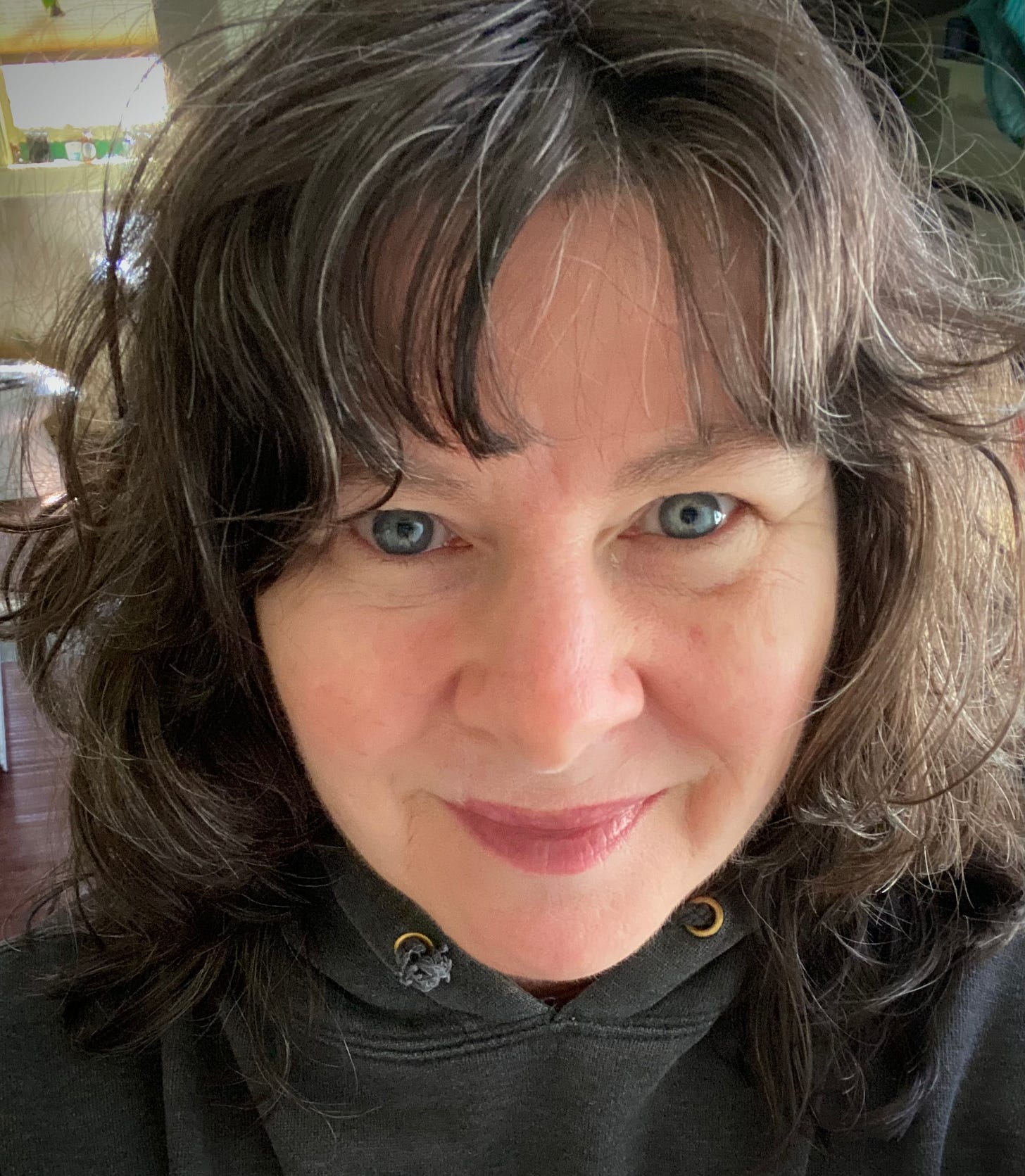I LOVE THE PROCESS of curating and sharing valuable things with you in this newsletter. And I love writing about the meaning I find. It feels like a practice, one worth the necessary time and attention. It allows me to be boundlessly curious while also requiring me to sharpen my discernment. I widen my view, gather more than the newsletter will hold, then interpret what I’ve found through the writing. Finally, I cull and edit, keeping only the most meaningful bits and those that feel harmonious with the larger collection of content. As with novels and films and other creative processes, most of what is created is eventually cut and composted back into the creative soil that this newsletter draws from.
I appreciate all your feedback and am always happy to hear that you enjoy this process from the receiving end. Everyone’s creativity gets nurtured, thoughts are provoked, biases are poked.
Humans are hardwired to learn and grow together from shared sources. The labor of finding, interpreting and sharing these sources is what drives and feeds me the most--the labor of love that is foraging for food, then dreaming up and preparing a meal from whatever is found.
Thank you, thank you, thank you for being here, for your curiosity and for caring. And for letting me know what resonates and for sharing whatever feels beneficial with your people. And thank you to those who support this work as paid subscribers.
I literally could not justify the time and energy without your readership, commentary and the financial support from those who can afford it. Thank you again.
—
THIS YEAR’S MOVE INTO MIDYEAR feels like stepping through a wide open door into a landscape that’s both familiar and new. I feel like I’m trying out new muscles and also using old muscles in new ways. Meanwhile, the world is tumultuous and horrifying and strange. I’m okay and I wonder if you’re okay. I’m finding ways to process my grief and fear through action even as I take the best care of myself possible. Thankfully, I’ve never fallen for the story that I must choose between my individuality and my relationship to the collective. A collective is nothing more than a gathering of individuals who explore how to stay in accord with one another and be stronger together despite everything.
As always, I’m wondering what ways you’re finding, what stories you’re not falling for and who you see yourself gathering in accord with. And as always, you’re free to let me know.
LINKS THAT MADE ME LOOK & LINGER
I’m totally smitten with Miguel Atwood-Ferguson’s album “Les Jardins Mystiques” that came out about a year ago. He says: “Each of the tracks is supposed to be a different mystical garden.” It definitely is an album you can inhabit in different ways as it progresses. I might never leave and in a weird way, feel like I’ve always been here. listen while you peruse the other links. Spotify | Bandcamp
Scientists have figured out why killer whales are smashing up luxury yachts: it's a new fad among teen orcas. "A combination of free time, curiosity and natural playfulness has led to young orcas adopting this 'trend' of boat-bumping."
Utterly fascinating piece about humans learning plant medicine from watching animals treating themselves. At the very least, I recommend reading the opening that tells the story of an orangutan giving themselves a facial--the first human documentation of an animal consciously using a plant purely for medicinal purposes.
"Reading Rainbow was not about learning to read, it was about loving to read" says LaVar Burton. I’ve heard this documentary is very substantive. I’ll watch even just to learn the story behind the theme song.
Speaking of documentaries about educational genius, Jim Henson Idea Man is a new documentary film about the Muppets/Sesame Street creator directed by Ron Howard. Can’t wait.
Here’s the latest research on how reading fiction affects your brain and... some advice for those of us who read digitally, and who might consider analog reading more often because the blue light isn’t the only reason not to look at screens at bedtime.
New research that shows that long before people develop dementia, they begin falling behind on financial obligations. This was true for multiple generations in my family. Gift article, NY Times
Fascinating 10 minute video explaining how dogs see. I’m a lifelong dog lover but had no idea they have their own rainbow.
Looking forward to trying out this new podcast called Primer as a new way to discover all sorts of non-English-language music. Each season explores a different genre, and each episode, a different totemic album in that genre. Season 1 is about “city pop” a Japanese genre popular in the ’70s and ’80s. Special guests will include Devendra Banhart.
The Moral Case for Working Less, which allows us to be better workers and better humans.
Listen to this Pearl Dive Meditation to dive deep into your body and away from thoughts. “Diving” is an age-old meditation metaphor and a favorite among my clients. I also used the diving theme in Yoga Nidra, as some of you might remember. This one’s recorded by a therapist who uses it to prep people for psychedelic therapy.
“The act of looking, and continuing to see, requires effort.” Looking at people looking at art: inside the mind of a gallery attendant. What it’s like to watch people looking at art during a time of changing attention spans and rising vandalism.
This interview with Judy Chicago on “The Great Women Artists” podcast really lifted my spirits. I love listening to Chicago almost as much as viewing her work. The first time I saw “The Dinner Party” at the Brooklyn Museum I felt like I was witnessing something sacred--not just conceptually sacred or sacred in meaning, but that the room, the objects and the materials were sacred, maybe like overlooking an archeological excavation of bones. My first glimpse of the installation. literally stopped me in my tracks and made me gasp. I remember entering the room so slowly and tentatively, sensing that I was approaching something fierce and vast.
Nan Goldin is an artist and person who has been tested by life, has proven her power and made an impact the hard way. She grew up witnessing her younger sister’s physical and psychological abuse and eventual suicide, then ran away from home, found a group of like-minded rebels in New York, succumbed to an opioid addiction and recovered from addiction as she became a well-known photographer and artist. The documentary “All The Beauty And The Bloodshed” follows Goldin and a group of artist-activists who, in response to the opioid crisis, helped bring accountability to the Sackler family, owners of the company that manufactured the addictive drugs. Goldin’s newest film tells the story of her sister Barbara against a backdrop of the early Christian martyr Saint Barbara, beheaded by her father for finding liberation through spirituality. The film, titled “Sisters, Saints, Sibyls” lays bear a link between spiritual and psychiatric abuse. I don’t expect this film to be easy to watch, but I trust Nan Goldin’s telling of it using her own photographs and voice. Her past work is a testament to her creativity in reframing abuse, grief and trauma into something valuable and beautiful. “Sisters, Saints, Sibyls” is debuting in a former chapel in London, presented by Gagosian Gallery until June 27.
The world’s first tooth-regrowing drug will be given to humans in September. (Hmmm.)
”Above all, a bayou is a living being. After the hurricane, the flood maps showed that the bayous flooded in all the places they had been made straight, as if they’d remembered their old channels and tried to stretch back into the old meanders that had been dredged and filled and paved.” Houston's efforts to suppress its waters creates a culture of flooding, written by Lacy M. Johnson, paintings by Calida Rawles.
First systematic review of MRI studies on youngsters who are heavy web users. Drawing on 12 studies, it shows excessive internet use leading to dramatic brain changes. The possible symptoms are described as “serious physical and interpersonal repercussions and are linked to mood modification, salience, tolerance, impulsivity, and conflict,” as well as “severe pain in their bodies or health issues like carpal tunnel syndrome, dry eyes, irregular eating and disrupted sleep” in more severe cases.
Free PDF, How to Walk and Talk. Why meet inside sitting down when you can do a “walk and talk” instead? I love walk and talk hangs, but just learned about these organized, longer term walk and talks where groups walk a certain distance over the course of a week, while in conversation with one another about a dedicated topic they decide upon together. I think it’s cool and want to join one and maybe even organize one someday. Could be great for so many groups, offering a break from Zoom or whatever room they usually meet in.
That’s it. Enjoy.
With Love + mystical musical gardens, bratty teen orcas, reading rainbows, dog rainbows, muppets, pearl dives, powerful art & walk-talks,





